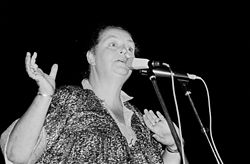History
In medieval Cornwall there are records of performances of ‘Miracle Plays’ in the Cornish language, with considerable musical involvement. Also (as frequently mentioned in the Launceston borough accounts) minstrels were hired to play for saint's day celebrations. The richest families (including Arundell, Bodrugan, Bottreaux, Grenville, and Edgcumbe) retained their own minstrels, and many others employed minstrels on a casual basis. There were vigorous traditions of Morris dancing, mumming, guise dancing, and social dance. [1]
During the Twelve Days of Christmas in 1466-67, the household accounts [2] of the Arundells of Lanherne, Mawgan-in-Pydar, record expenditures to buy white bonnets for minstrels, cloth and bells for Morris dancers, as well as materials for costumes for the "disgysing" (mummers or guise dancers), an activity which involved music and dancing.
Then followed a long period of contention which included the Cornish Rebellion of 1497, the 1549 Prayer Book Rebellion, the Persecution of Recusants, the Poor Laws, and the English Civil War and Commonwealth (1642–1660). The consequences of these events disadvantaged many gentry who had previously employed their own minstrels or patronised itinerant performers. Over the same period in art music the use of modes was largely supplanted by use of major and minor keys. Altogether it was an extended cultural revolution, and it is unlikely that there were not musical casualties. [3]
18th and 19th centuries
A number of manuscripts of dance music from the period 1750 to 1850 have been found which tell of renewed patronage, employment of dancing masters, and a repertoire that spanned class barriers. Seasonal and community festivals, mumming and guise dancing all flourished. [4]
In the 19th century, the nonconformist and temperance movements were strong: these frowned on dancing and music, encouraged the demise of many customs, but fostered the choral and brass band traditions. Some traditional tunes were used for hymns and carols. Church Feast Days and Sunday School treats were widespread—a whole village processing behind a band of musicians leading them to a picnic site, where "Tea Treat Buns" (made with smuggled saffron) were distributed. This left a legacy of marches and polkas. Records exist of dancing in farmhouse kitchens, and in fish cellars Cornish ceilidhs called troyls were common, they are analogous to the fest-noz of the Bretons. Some community events survived, such as at Padstow and at Helston, where to this day, on 8 May, the townspeople dance the Furry Dance through the streets, in and out of shops, even through private houses. Thousands converge on Helston to witness the spectacle. [5] The "Sans Day Carol" or "St Day Carol" is one of the many Cornish Christmas carols written in the 19th century. This carol and its melody were first transcribed from the singing of a villager in St Day in the parish of Gwennap: the lyrics are similar to those of "The Holly and the Ivy".
In Anglican churches the church bands (a few local musicians providing accompaniment in services) were replaced by keyboard instruments (harmonium, piano or organ) and singing in unison became more usual.
Vocal music
Folk songs include "Sweet Nightingale", "Little Eyes", and "Lamorna". [6] Few traditional Cornish lyrics survived the decline of the language. In some cases lyrics of common English songs became attached to older Cornish tunes. Some folk tunes have Cornish lyrics written since the language revival of the 1920s. Sport has also been an outlet for many Cornish folk songs, and Trelawny , the unofficial Cornish national anthem, is often sung by Cornish rugby fans, along with other favourites such as "Camborne Hill" and "The White Rose". [7] [8] The Cornish anthem that has been used by Gorseth Kernow for the last 75 plus years is "Bro Goth Agan Tasow" [9] ("The Land of My Fathers", or, literally, "Old Country of our Fathers") with a similar tune to the Welsh national anthem ("Hen Wlad Fy Nhadau") and the Breton national anthem ("Bro Gozh ma Zadoù"). [10] "Bro Goth Agan Tasow" is not heard so often, as it is sung in Cornish. Other popular Cornish anthems are "Hail to the Homeland" and Cornwall My Home by Harry Glasson written in 1997.
Sabine Baring-Gould compiled Songs of the West, which contains folk songs from Devon and Cornwall, in collaboration with Henry Fleetwood Sheppard and F. W. Bussell. Songs of the West was published by Methuen in conjunction with Watey and Willis; the first edition appeared both as a four-part set, undated, and as one volume dated 1895. In a new edition songs omitted from the first edition were listed, and the music was edited by Cecil Sharp. The second edition mentions the third collaborator, the Rev. Dr. F. W. Bussell, a scholarly eccentric who later became Vice-President of Brasenose College, Oxford. Sheppard was Rector of Thurnscoe, Yorkshire, and his parochial duties limited the amount of time he could spend on the work. In Plymouth City Library are two manuscript volumes containing the material as collected, in all 202 songs with music. In the published work it was necessary to bowdlerise some songs so that the book would be acceptable to respectable Victorians. [11]
In Cornwall, the carol "While shepherds watched their flocks" is popularly sung to "Lyngham", a tune usually associated with "O for a Thousand Tongues to Sing". Another tune traditionally used for it in Cornwall is "Northrop". [12]
Dances

Cornish dances include community dances such a 'furry dances', social (set) dances, linear and circle dances originating in carols and farandoles, and step dances – often competitive. Among the social dances is 'Joan Sanderson', the cushion dance from the 19th century, but with 17th-century origins. [13]
The English composer Sir Malcolm Arnold composed "Four Cornish Dances" in 1966 which is influenced by characteristically Cornish types of music. [14]
Breton connection
Cornish music is often noted for its similarity to that of Brittany; some older songs and carols share the same root as Breton tunes. From Cornwall, Brittany was more easily accessible than London. Breton and Cornish were (and are) mutually intelligible.[ clarification needed ] There was much cultural and marital exchange between the two countries and this influenced both music and dance. [15]


